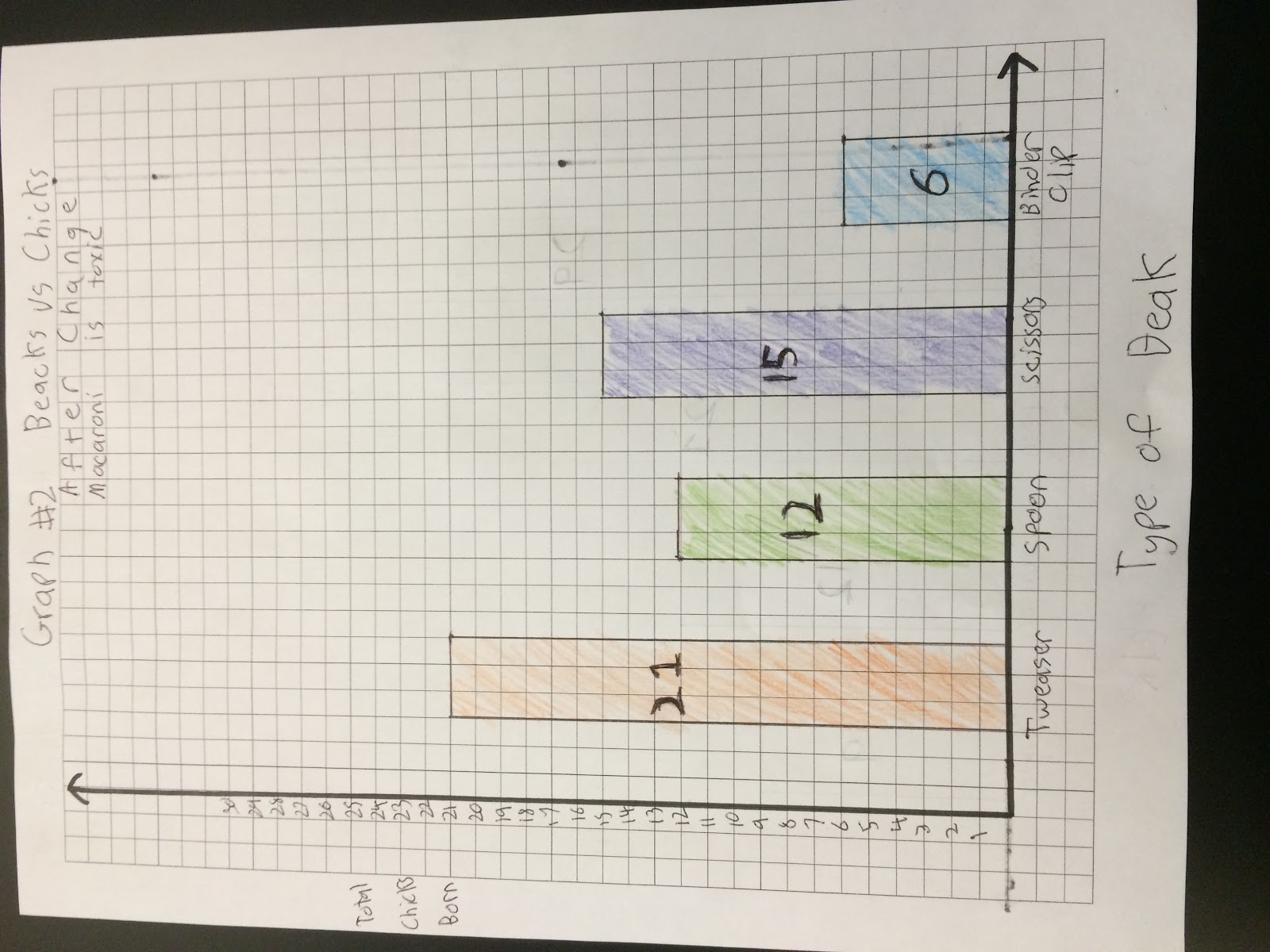Part 1
|
Spoon Chicks
|
Binder Clip Chicks
|
Tweaser Chicks
|
Scissor Chicks
|
Totals
|
Total Chicks Born
|
21
|
9
|
29
|
12
|
71
|
Percent of Chicks Born
|
30%
|
13%
|
41%
|
16%
|
100%
|
In this lab we simulated natural selection by using tweasers, spoons, binderclips, and scissors to represent diffrent types of bird beakes. This lab showed two of darwin´s principles. One is thes individgals with better traits have more offspring. This is shown is our lab, by the fact that our beak that was the best, the twaesers created the most offspring at 29(see top graph) followed by 21, 12, and then 9, for the worst beak.
The other principle is that the populations look like the winners. This is also shown by our lab. We found that the tweasers had the best traits, and therefor had the most offsping and the population was becoming mostly with that trait. By only three years the population was 41% tweasears. The spoon was next with 30%, and the other two dropped to 16%, and 13%.
In our lab we asked the question if natural selection occurs in a population, how do changes in selective pressures affect the evolution of that species?" We found that if if there are winners, and losers in a evolution, the population looks like the winners, and the tweasers are the winners, then the population will be mostly tweasers. We also found that if we change the selective pressures, then the winners, and losers will change. To simulate the change, we made one type of food poisonous. This resulted in all of the populations dropping a little bit, except the scissors, because they couldn't food any way. The spoon beak did the worst because it was hard for it to control what it picks up.
Two errors, are that after every year chicks were produced, but we still only used one of each beak type in each experiment. This resulted in a linear growth. instead of an exponential growth that would have been more accurate. The other is that we had different strategies for picking up food, the resulted in some beaks doing better purely because the were smarter. to fix this we should create more guidelines for how to pickup food.
This lab was done to demonstrate natural selection. It demonstrated the competition between the different organisms.I learned how different phenotypes affect how will different species survive. Also, this supported observations of Darwin. This can be used to about the threats of invasive species. Based on my experience from this lab, I now get a closer understanding of the competition between animals.

Part 2
|
Spoon Chicks
|
Binder Clip Chicks
|
Tweaser Chicks
|
Scissor Chicks
|
Totals
|
Total Chicks Born
|
12
|
6
|
21
|
15
|
54
|
Percent of Chicks Born
|
22%
|
11%
|
39%
|
28%
|
100%
|
